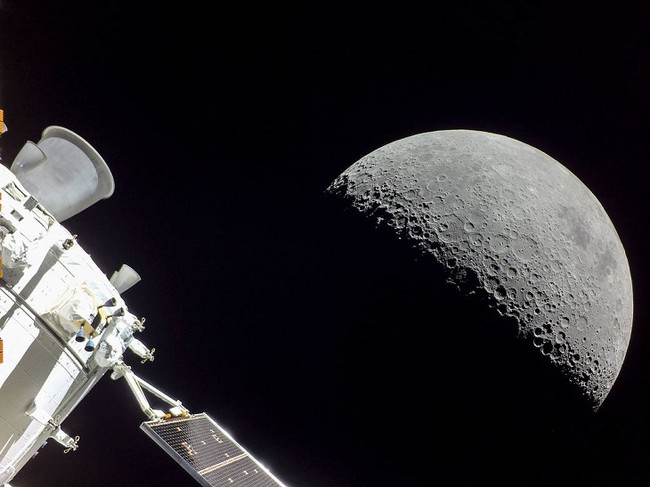Though it was originally slated for late August, weather concerns and mechanical issues forced its launch back over a month and a half. Eventually, the Artemis I rocket launched from the Kennedy Space Center on November 16th.

The purpose of the mission? To lay the groundwork (spacework?) for future crewed missions to the Moon. In particular, the 25-day jaunt was focused on testing the durability of the Orion spacecraft, including its heat shield.
On Sunday morning, the Orion spacecraft made its successful return to Earth, splashing down in the Pacific Ocean.
Splashdown.
After traveling 1.4 million miles through space, orbiting the Moon, and collecting data that will prepare us to send astronauts on future #Artemis missions, the @NASA_Orion spacecraft is home. pic.twitter.com/ORxCtGa9v7
— NASA (@NASA) December 11, 2022
Per NASA:
Splashdown is the final milestone of the Artemis I mission that began with a successful liftoff of NASA’s Space Launch System (SLS) rocket Nov. 16, from Launch Pad 39B at NASA’s Kennedy Space Center in Florida. Over the course of 25.5 days, NASA tested Orion in the harsh environment of deep space before flying astronauts on Artemis II.
“The splashdown of the Orion spacecraft – which occurred 50 years to the day of the Apollo 17 Moon landing – is the crowning achievement of Artemis I. From the launch of the world’s most powerful rocket to the exceptional journey around the Moon and back to Earth, this flight test is a major step forward in the Artemis Generation of lunar exploration,” said NASA Administrator Bill Nelson. “It wouldn’t be possible without the incredible NASA team. For years, thousands of individuals have poured themselves into this mission, which is inspiring the world to work together to reach untouched cosmic shores. Today is a huge win for NASA, the United States, our international partners, and all of humanity.”
The spacecraft was put through the paces while completing its journey.
During the mission, Orion performed two lunar flybys, coming within 80 miles of the lunar surface. At its farthest distance during the mission, Orion traveled nearly 270,000 miles from our home planet, more than 1,000 times farther than where the International Space Station orbits Earth, to intentionally stress systems before flying crew.
….
During the flight test, Orion stayed in space longer than any spacecraft designed for astronauts has done without docking to a space station. While in a distant lunar orbit, Orion surpassed the record for distance traveled by a spacecraft designed to carry humans, previously set during Apollo 13.

And the splashdown isn’t the end of the line for Orion. Now it will make the journey back to Kennedy.
Once at Kennedy, teams will open the hatch and unload several payloads, including Commander Moonikin Campos, the space biology experiments, Snoopy, and the official flight kit. Next, the capsule and its heat shield will undergo testing and analysis over the course of several months.
Orion’s return wasn’t the only space-related event going on Sunday. While it was splashing into the Pacific, SpaceX launched both a moon lander and a lunar rover from Cape Canaveral in Florida.
SpaceX on Sunday launched a Tokyo company’s moon lander and the United Arab Emirates’ first lunar rover from Cape Canaveral Space Force Station in Florida. https://t.co/YJqAJ8hucG pic.twitter.com/v5xBiOL2ho
— The Associated Press (@AP) December 11, 2022














Join the conversation as a VIP Member